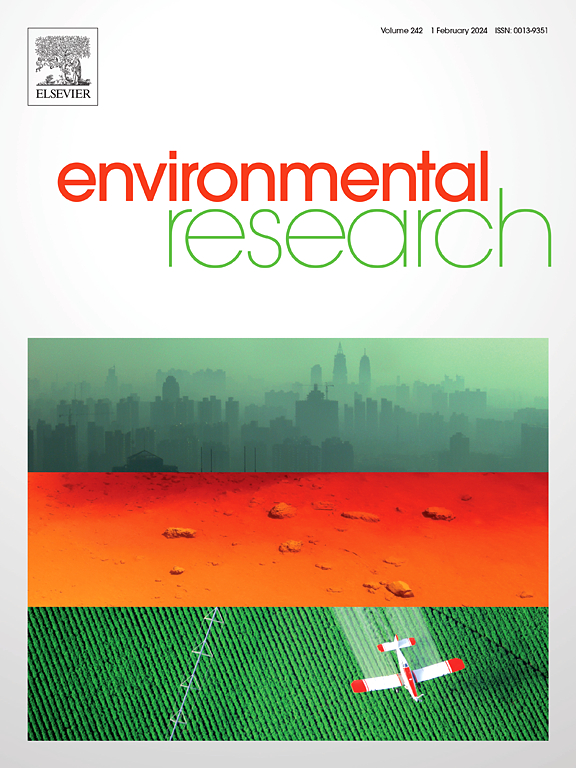A new cage design to test pesticide impacts on honey bees via toxicant exposure through sucrose, pollen and beeswax simultaneously
IF 7.7
2区 环境科学与生态学
Q1 ENVIRONMENTAL SCIENCES
引用次数: 0
Abstract
Western honey bees (Apis mellifera) are exposed to pesticides via nectar/honey, pollen and beeswax. The impacts of honey bee exposure to pesticides via pollen or beeswax currently are not considered in pesticide risk assessments. Correspondingly, we developed an in vitro method through which one can expose adult honey bees to pesticide residues in all matrices simultaneously. The design requires modifying in vitro cages to accommodate a pollen paste feeder and beeswax, determining the appropriate concentration of a toxic standard (dimethoate) needed in both matrices to kill 50 % of exposed adult honey bees (positive control), and integrating the test substances into the matrices consistently and evenly. We established five concentrations of dimethoate, a solvent control (acetone) and a negative control for sucrose water, pollen paste, and beeswax. Each dose was tested with three cages, 10 bees/cage, following EPA and OECD guidelines for Tier 1 tests. Mortality was significantly different between bees in the treatment and control groups at 0.1875–3 μg/g dimethoate in sucrose water, 48–192 μg/g in pollen, and 30–120 μg/g in beeswax. We conducted an additional experiment by adding the highest recorded levels of imidacloprid detected in honey (represented by sucrose water), pollen, and beeswax to each matrix as a proof-of-concept for our proposed method. Survival of bees in this worst-case scenario treatment was significantly lower than that in the solvent control group. The addition of pollen and beeswax as matrices for test substance screening will increase the biological relevance of honey bee toxicity tests.
一种新型笼子设计,通过蔗糖、花粉和蜂蜡同时暴露在有毒物质中,以测试农药对蜜蜂的影响
西方蜜蜂(Apis mellifera)通过花蜜/蜂蜜、花粉和蜂蜡接触杀虫剂。目前,农药风险评估并未考虑蜜蜂通过花粉或蜂蜡接触农药的影响。相应地,我们开发了一种体外方法,通过这种方法可以同时将成年蜜蜂暴露于所有基质中的农药残留。该设计需要修改体外笼子,以容纳花粉膏喂食器和蜂蜡,确定两种基质中所需的有毒标准(乐果)的适当浓度,以杀死50%暴露的成年蜜蜂(阳性对照),并将测试物质均匀地整合到基质中。我们建立了五种浓度的乐果,一种溶剂对照(丙酮)和蔗糖水、花粉膏和蜂蜡的阴性对照。按照EPA和OECD一级试验准则,每剂量用3个笼子,10只蜜蜂/笼子进行试验。蔗糖水中乐果含量为0.1875 ~ 3 μg/g,花粉中乐果含量为48 ~ 192 μg/g,蜂蜡中乐果含量为30 ~ 120 μg/g,处理组蜜蜂死亡率与对照组差异显著。我们进行了另一项实验,将在蜂蜜(以蔗糖水为代表)、花粉和蜂蜡中检测到的最高记录水平的吡虫啉添加到每个基质中,作为我们提出的方法的概念验证。在这种最坏情况下,蜜蜂的存活率明显低于溶剂对照组。添加花粉和蜂蜡作为基质进行试验物质筛选将增加蜜蜂毒性试验的生物学相关性。
本文章由计算机程序翻译,如有差异,请以英文原文为准。
求助全文
约1分钟内获得全文
求助全文
来源期刊

Environmental Research
环境科学-公共卫生、环境卫生与职业卫生
CiteScore
12.60
自引率
8.40%
发文量
2480
审稿时长
4.7 months
期刊介绍:
The Environmental Research journal presents a broad range of interdisciplinary research, focused on addressing worldwide environmental concerns and featuring innovative findings. Our publication strives to explore relevant anthropogenic issues across various environmental sectors, showcasing practical applications in real-life settings.
 求助内容:
求助内容: 应助结果提醒方式:
应助结果提醒方式:


